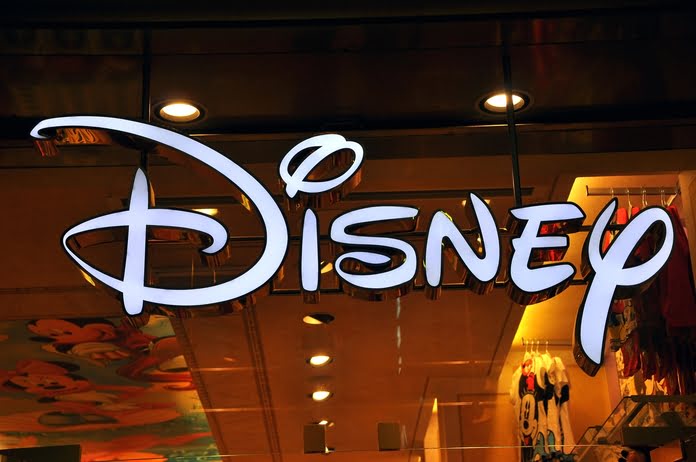Disney Stock (NYSE:DIS)
The stock of Disney (NYSE:DIS) doesn’t require any introduction. Everyone has experienced the thrill of a child visiting Disney World, being moved by one of its beloved characters, or engaged in a discussion about the Marvel universe.
Disney does, however, appear very differently today than it did in the past. The organization has expanded its service offering to encompass many other networks and brands. Disney has recently just been concerned with the quantity of content. However, as they turn their attention to quality, that is changing. The company’s goals are to: (1) revitalize Disney+, (2) introduce several pricing levels, (3) increase ad revenue, and (4) streamline its products in order to produce better content.
The Purpose of This Article
The flaws with Disney’s streaming services have been well-presented by many authors, who also offer suggestions for what went wrong and how to repair it. Instead of going over the same ground again, I’d want to go into greater detail about Disney’s finances and, ultimately, the valuation based on the most recent earnings report.
An Evaluation of the Financials Overall
The major difficulties are the company’s declining gross margins, huge leverage, and hefty interest payments.
Despite the company’s expansion into streaming services, which has the advantage and point of normally strong margins, Disney’s revenue has increased while its gross margins have contracted. I’m not sure whether it is that straightforward, but it would be simple to state that viewers are not interested in Disney’s material, hence the corporation cannot make enough money to cover production costs. For example, Disney has 4 out of the top 10 box office hits in 2022. Even with the strong sales, it’s possible that the costs are too high.
The enormous debt Disney carries is another problem. Disney’s business model has altered recently as a result of management’s acquisition of multiple companies, many of which have little connection to one another. In order to support this expansion, management has virtually tripled the company’s debt load from its historical average.
This is a concern for a few reasons, as it is at the moment:
- Free cash flows for the company are significantly below average.
- Rates of interest are rising.
These two elements add to the burden of the debt shown on the balance sheet.
The company has significant interest payments due to the size of the debt, which regrettably consumes a significant portion of its cash flow from operations. Few analysts account for the illusory impacts of stock-based compensation, which is a crucial adjustment.
SBC is regarded as a non-cash item under GAAP guidelines, which enables businesses to include SBC back into their cash flow calculation. This artificially inflates that figure because SBC must be deducted from cash flow from operations because it is a cash item that represents management’s claim on future earnings.
The interest expenditure to CFFO ratio for SBC during the previous two years was 31%. A third of Disney’s profit is lost solely to pay interest, despite all the work and expenses the company incurs to turn a profit. It’s also significant to note that the average CAPX during the previous four years was $3.6 billion, or 72% of cash flow from operations.
Disney spends all of its money on interest (31%) and capital expenditures (72%); the total is 103%, which is more than operational cash flow. This poses a problem since it raises the question of where a firm gets the money to develop if it doesn’t have the resources to do it internally (because everything is going toward paying down debt and maintaining existing assets). Either more debt or new equity must be issued.
By the way, this is the reason the corporation reduced its dividend. Analyzing the data reveals that there isn’t any genuine free cash flow available to pay a dividend. There is free cash flow on the books, but that is an accounting measurement of FCF, not a cash measurement.
Results for Q2 2023
I’d say this if I had to sum up the quarter in one phrase:
Disney is moving in the right direction, especially with its DTC channel, but the numbers have not yet improved as the change in direction has only recently begun.
The Drama
Disney has suffered with its DTC channel since the expenditures associated with that market are reducing profits, which is causing the bottom line to contract. This is an intriguing case since, on the surface, it would seem that Disney’s streaming services would be successful given that they own super-mega franchises and enduring brands. Nevertheless, the business lost four million (2% of its total) Disney+ customers during the quarter, and it expects to report up to $1.8 billion in impairment charges for the removal of unwanted content in the next quarter. This is a big expense that can be written off to support the claim that “we paid a fortune to make a lot of shows that no one watched.”
There are several explanations for why Disney’s streaming services have failed, but as I have stated, I want to concentrate on the finances.
The Figures
From a statistics viewpoint, the latest quarter reaffirmed more of the same difficulties and did not demonstrate significant improvement in any of the previously highlighted categories: gross margins, leverage, interest/CFFO. Specifically…
- Gross margins were 33%.
- There was $45 billion in long-term debt.
- The ratio of interest expense to cash flows was 30%.
The lower-than-expected performance of Disney in recent years is consistent across all three data types. The future would have looked better if the company had reached an inflection point this quarter, but it doesn’t as of yet. The structural problems that Disney is currently experiencing in these areas have essentially not changed.
Last but not least, the business generated $0.93 in EPS during the quarter, which essentially equates to a fair value (15 P/E) of $55 per share. In light of this, let’s go to the following part.
Valuation
I’ll offer two value techniques: first, my own discounted cash flow, and second, a valuation of FastGraphs earnings.
There are several assumptions made in a discounted cash flow model and it is crucial to note no two investors will get the same valuation. I base my assumptions on 7% annual growth and 4% inflation for all time. Costs and CAPX were based on recent historical averages. 21% is the set tax rate. I gave Disney the benefit of the doubt despite the fact that the CAPX growth is probably too lenient. The CAPM model was used to determine the WACC, which is 9%.
The fair value of Disney is $52.49 or a similar amount. The existing stock price of the corporation will significantly decline as a result. Disney trades virtually always at a premium to its fair value because it is a legacy brand. In particular, Disney’s usual P/E is 22 as opposed to the typical fair value P/E of 15. The stock price in this instance would be worth about $77 per share because Disney stock typically trades at a 50% premium to its fair value. The company’s fair market value is, therefore, better represented at $77 per share, and as a result, the downside risk is probably closer to (24%) from current levels.
Keep in mind that Disney’s dividend, which is no longer paid, contributed to the market rewarding the firm with a 50% premium. This is a crucial factor to take into account when determining whether future P/E is suitable to utilize to value Disney going forward.
According to FastGraphs, Disney’s fair value P/E is approximately $52 and its typical P/E stock price is approximately $77. These two estimations perfectly match my discounted cash flow model.
Disney Would Be a Buy If…
Here are four changes that might make Disney a good investment.
Margin improvement – Over the previous five years, Disney’s gross margins have improved whereas the historical average has fallen by about 150 basis points each year. The bottom line has suffered severe erosion as a result. The stock will be worth more than $125 a share if the company’s gross margins return to their historical averages of 45%.
Reduced debt – The annual interest payment eats up cash flow that may be spent for other beneficial endeavors. Disney would be better off biting the bullet and admitting this approach was a mistake than continuing to take on debt in order to keep acquiring new businesses. If they do, they will be able to spend the next few years paying down debt and will have more cash flow in the future to support successful investments.
Fewer acquisitions – Speaking of purchases, Disney should concentrate more on creating excellent content, upgrading its theme parks, and generally growing the amazing brands and characters they already hold.
Management that is supportive of shareholders – If Disney, whenever possible, focused more on returning cash to the shareholders by resuming its dividend and a stock repurchase program, then its stock would be far more lucrative, appealing, and alluring to investors.
Notably, we are quite far from any rational stock buybacks in point four. Only when necessary should this be taken into account.
Go Woke, Go Bankrupt?
Finally, I want to talk about a topic that many people raise, which centers on the query “Has Disney become too ideological?” Many Americans claim that Disney’s forced inclusion of politics, racism, gender, sexuality, and other topics has alienated families and traditional viewers to the point where they are no longer interested in watching that kind of entertainment. These people make up the bulk of Disney’s viewership.
The purpose of Disney (and other non-ideological content) is to provide an escape from reality. Disney films give regular people a chance to lose themselves in action and a universe populated by real [keyword] characters. It is a dangerous move that could backfire to force any ideology—political, religious, or sexual—unnaturally into programs that are not designed for such divisive perspectives.
Bottom Line
Over the past few years, management’s effort to transform Disney into a conglomerate has significantly reduced shareholder value. The company’s profitability is affected by margins, interest, debt, and stock-based compensation, among other factors. Disney stock is valued pretty highly, thus if markets behave rationally, I would anticipate a drop of between (25 and 50%). The stock, however, might be a good buy if the business starts to demonstrate improvements in the trouble spots, such as regaining prior margins, restoring its dividend, and lowering leverage. Disney stock is currently rated as a sell by me.
Featured Image: Megapixl















